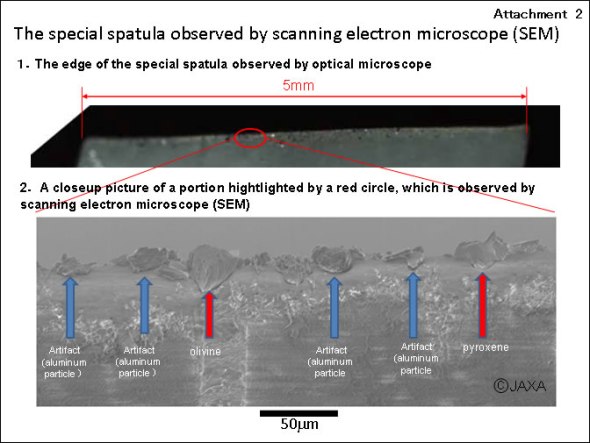|
That is the headline on this week’s Aviation Week and Space Technology’s article on the preliminary results from the compartment containing samples from the second landing on the asteroid Itokawa. The Hayabusa team has cataloged the particles found inside and determined that the majority are primitive minerals, and that they differ from Earth’s surface rocks. |
|
|
|
Scanning Electron Microscope (SEM) revealed approximately 1500 grains that appear to be rocky material and most are of extraterrestrial origin. Comparison of these grains with samples from the Earth show that they differ from Earth rocks. Remote sensing data collected by the X-Ray Fluorescent Spectrometer (XRS) and the Near-Infrared Spectrometer (NIRS) on the Hayabusa spacecraft during the encounter with Itokawa support the results from the sample return compartment. The grains are on average less than 10 micrometers in size, and include olivine, pyroxene, iron sulfide and plagioclase. JAXA is developing the necessary handling techniques and preparing the associated equipment for the initial (but more detailed) analyses of these ultra-minute particles. The sample compartment from the first landing has not been opened, and may well contain more particles than those recovered from the first compartment. |

